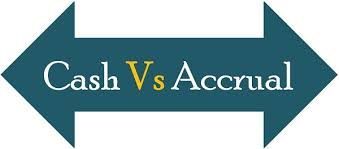How to Choose Between Cash and Accrual

The accounting method you choose to use can determine if you show a profit or not in each year. This directly affects your business income taxes, and it may also impact whether you are able to obtain a loan or raise equity investments. Unlike other tax or accounting choices, you can’t choose what’s best from year to year — you must make a choice and stick with it for the long term.
What’s the Difference Between Cash and Accrual Accounting?
Your accounting method determines when transactions should be reported on your financial statements. The cash method is named because you record a transaction when you get the cash. In the accrual method, you report your accrued income and expenses when they were earned or incurred regardless of when the cash changes hands.
For example, say you sell a widget on December 15th and the customer pays $500 on January 15th as you agreed. In the cash method, the $500 is recorded as income on January 15th and, if your tax year follows the calendar year, goes on the new year’s taxes. In the accrual method, the $500 is recorded on December 15th and would be taxed in the previous year even though you didn’t receive the money until the new year.
What are the Advantages and Disadvantages of Each Method?
The most important thing to understand is that the accounting method you choose doesn’t affect how much money you make or lose. It simply affects when you record a transaction. While your taxes might be slightly impacted depending on your tax bracket, if the method you chose increased or decreased your taxes in one year, that difference will generally be offset in the next year.
Cash Method
The key advantage to the cash method is simplicity. You can simply look at your checkbook and sales receipts to add up your profits and losses. You also know exactly how much cash you have at any given time.
The downside is that when you receive or send cash may not accurately reflect when you earned or incurred an expense.
Accrual Method
The key advantage to the accrual method is smoothing out your profits and losses. When you make or receive a large payment for something that happened over a period of several months, accrual accounting divides the transaction over those months.
The downside to the accrual method is that it takes extra work to figure out how all your transactions should be recorded in your books. You also need to keep separate cash flow statements to know how much cash you have on-hand at any given time.
How to Choose Between Cash and Accrual
You are generally free to choose either method for any reason at all. Many small businesses use cash accounting because it’s easier. If you’re looking to raise funds, outside investors often prefer to see books using the accrual method so they can view the big picture of the company’s financials.
You must use the accrual method for tax purposes if:
- Your average annual gross receipts over three years exceed $5 million
- You hold products in inventory and your gross receipts exceed $1 million per year
- You are a publicly traded company that is required to follow Generally Accepted Accounting Principles(GAAP)
Changing Accounting Methods
Businesses may not freely change their accounting methods to prevent them from using changes to avoid taxes. Once you’ve selected your accounting method and filed taxes under that method, you must request IRS approval for any changes to your accounting method. If an approved change results in an adjustment to your taxable income, you will receive credit for the difference/payment in the tax year in which the change is approved. The company can also elect to recognize one-fourth of the adjustment in the four succeeding years starting with the year of the adjustment.
For example:
Company Z, a calendar-year corporation, has a net positive section 481(a) adjustment of $320,000 at the end of year 20X1. If Company Z initiates a change in its accounting method under revenue procedure 97-27 for the 20X2 tax year, the company will recognize one-fourth of the 481(a) adjustment in the four succeeding years, start with 20X2. However, if Company Z is under examination for 20X1 and the IRS makes an accounting change adjustment, the entire section 481(a) adjustment will be taxable in the year of examination
|
Year |
Taxable Income – IRS Initiates Change |
Company Initiates Change |
|
20 X 1 |
$320,000 |
– |
|
20 X 2 |
– |
$80,000 |
|
20 X 3 |
– |
$80,000 |
|
20 X 4 |
– |
$80,000 |
|
20 X 5 |
– |
$80,000 |